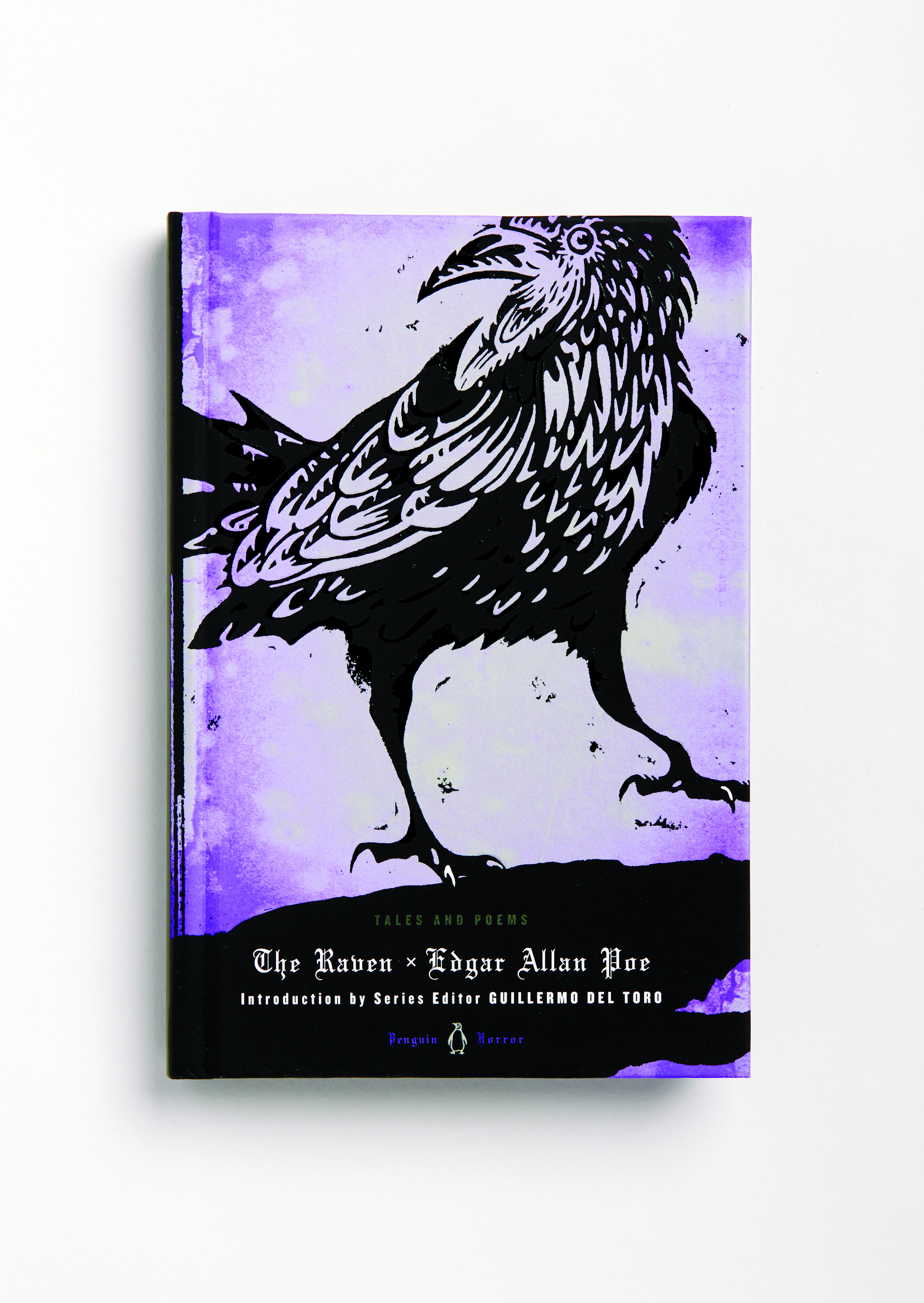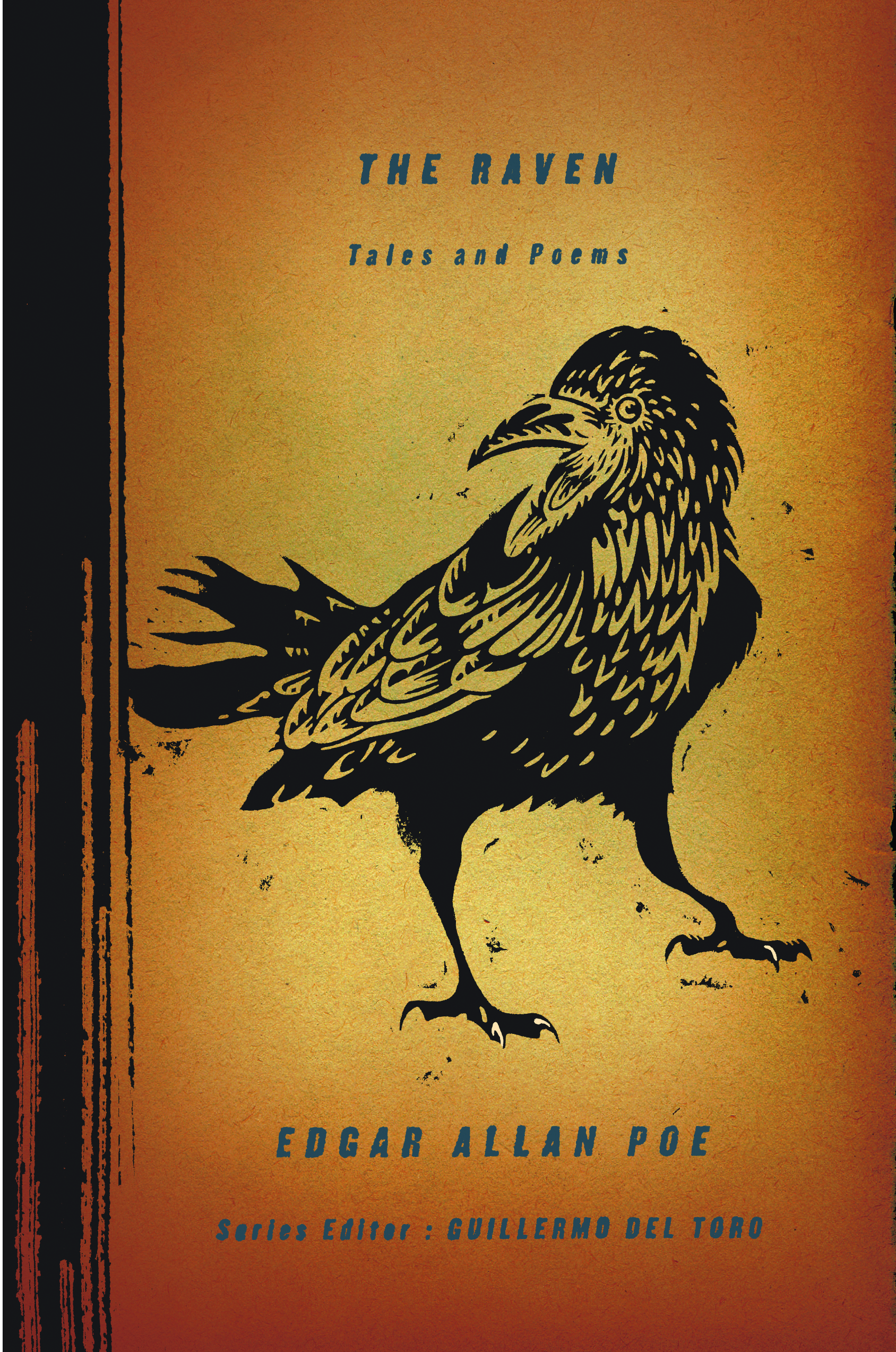Covering Horror

After 27 years at Penguin Random House, Senior VP and Executive Creative Director Paul Buckley possesses an enviable amount of professional freedom. "It's up to me what I choose to art direct or what I choose to design personally," he told Spine. He and his staff oversee 16 imprints, annually shepherding more than 1,000 book covers and jackets through the design process. Buckley himself designs several dozen. But despite attending the School of Visual Arts on an illustration scholarship, Buckley had never illustrated for Penguin. "In all these years I've never tried to pitch myself as an illustrator to my team," he said. "I can always find someone far better than myself." Or could until Penguin decided to publish a series of well-known horror titles as part of its Classics imprint.
Curated by award-winning filmmaker Guillermo del Toro, Penguin Horror features six chilling classics: "American Supernatural Tales," "Frankenstein," "Haunted Castles," "The Haunting of Hill House," "The Raven" and "The Thing on the Doorstep and Other Weird Stories." The spooky titles spoke to Buckley. "I really, really wanted this." What he didn't want was to put his coworkers in the awkward position of saying no. Instead of pitching himself for the project, he created a few covers at home and shared them at a packaging meeting. "They were embraced immediately, which was not doubt a relief for all," Buckley said.
The six covers appear as if created with wood or linoleum cuts, featuring a color plus single images in black, but are actually the result of a process called tempera resist. Buckley's father Gerald, an artist and advertising agency art director, taught his son the technique.
"It's a very time-consuming process where you paint white on white first," Buckley explained. "You take a water-soluble white paint and on heavy paper use that paint to block out the positive spaces, so it's a bit difficult to see what you're doing, which in turn becomes part of its character. When that is done you take non-soluble black ink and cover the entire sheet, so that your once entirely white sheet has now become an entirely black sheet.
"Once that has dried, you stick the whole sheet under a faucet and the white paint will start to wash away, leaving you only the black areas and these beautiful striations created when the paint and some of the ink all interacted with the water … again, this becomes part of the character."
Though Guillermo del Toro curated the series, Buckley didn't collaborate with the filmmaker on the covers, though he assumes del Toro approved. As for Buckley himself, he admits he struggled a bit with two of the covers, those for "Frankenstein" and "The Raven," perhaps the most well-known of the six titles. "My Frankenstein's monster looks like Hollywood's Frankenstein's monster … . I tried for days to create a very different monster and nothing felt right."
He felt the same about the raven. "I think it's a good raven, but it is a typical go-to for Poe." The rest of the six, though, "I feel pretty good about." What's up next for Buckley? "Repackaging the [J.M.] Coetzee backlist, the Ken Follett backlist, and working on a few fiction frontlist hardcovers." Spine can't wait.
Join us in celebrating the enormous talent that goes into making books. Consider a small donation to our Patreon fund. Your support helps us provide you with an in-depth look at some of the book publishing industry's most creative people.
www.patreon.com/spinemagazine
Spine Authors Editor Susanna Baird grew up inhaling paperbacks in Central Massachusetts, and now lives and works in Salem. Her writing has appeared in a variety of publications, including Boston Magazine, BANG!, Failbetter, and Publishers Weekly. She's the founder of the Salem Longform Writers' Group, and serves on the Salem Literary Festival committee. When not wrangling words, she spends time with her family, mostly trying to pry the cat's head out of the dog's mouth, and helps lead The Clothing Connection, a small Salem-based nonprofit dedicated to getting clothes to kids who need them. Online, you can find her at susannabaird.com and on Twitter @SusannaBaird.










